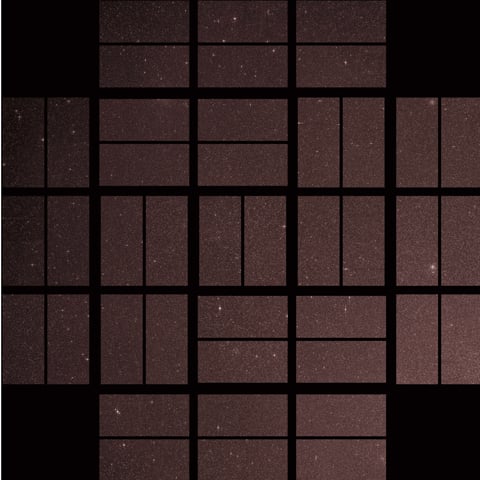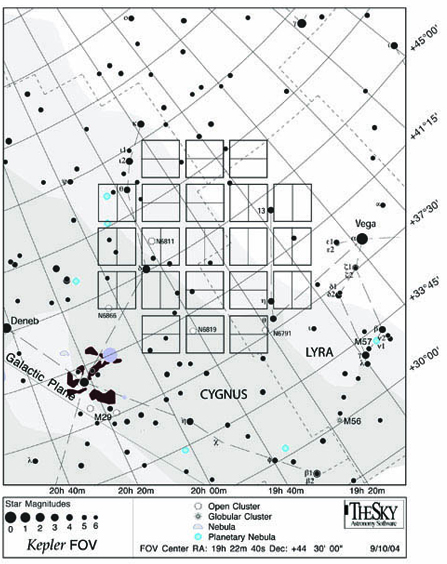Posted on 04/18/2009 4:04:02 PM PDT by KevinDavis
NASA's Kepler mission has taken its first images of the gigantic star-field that will be in its sights for the next three years. This 100-square-degree patch of sky, equivalent to two side-by-side dips of the big dipper, contains an estimated 14 million different stars. Of these, 100,000 carefully selected stars will be Kepler's special focus, where it will search for orbiting exoplanets. If predictions hold true, Kepler will for the first time be able to detect small rocky planets like the Earth, orbiting in the habitable zone of their stars.
(Excerpt) Read more at planetary.org ...
Bump.
 |
||
| · join · view topics · view or post blog · bookmark · post new topic · | ||
| Google news searches: exoplanet · exosolar · extrasolar · | ||
This first shot shows Kepler's full field of view, containing an estimated 14 million stars. More than 100,000 of these have been selected as candidates for the agency's planet hunting, NASA said.

The space telescope is focused in the constellations Cygnus and Lyra. NASA said scientists selected the spot to avoid the region's brightest stars (shown as the largest black dots), whose light could saturate large portions of Kepler's detectors and spill into nearby planet-hunting territory.

Thanks texas booster. Must be the 100K selected as candidates resulted from computerized decisionmaking.
Disclaimer: Opinions posted on Free Republic are those of the individual posters and do not necessarily represent the opinion of Free Republic or its management. All materials posted herein are protected by copyright law and the exemption for fair use of copyrighted works.